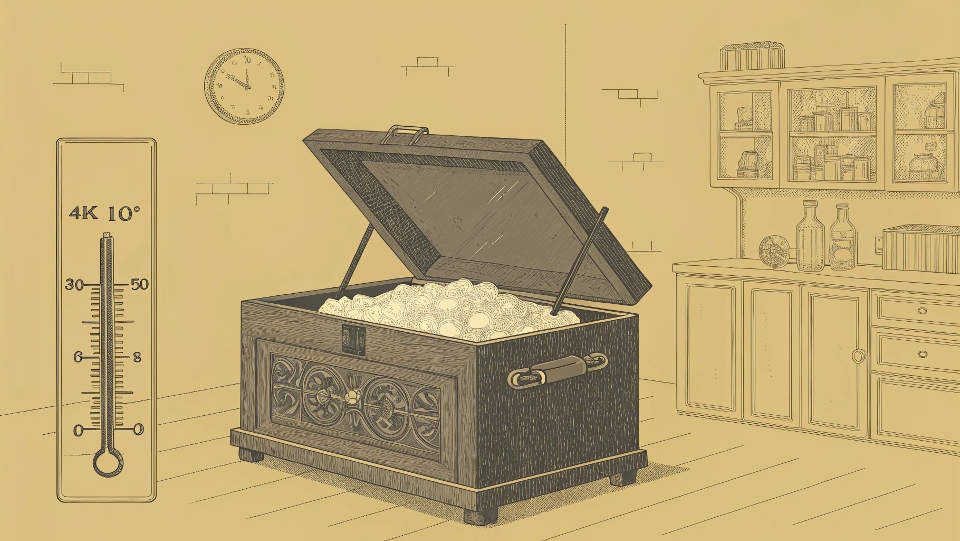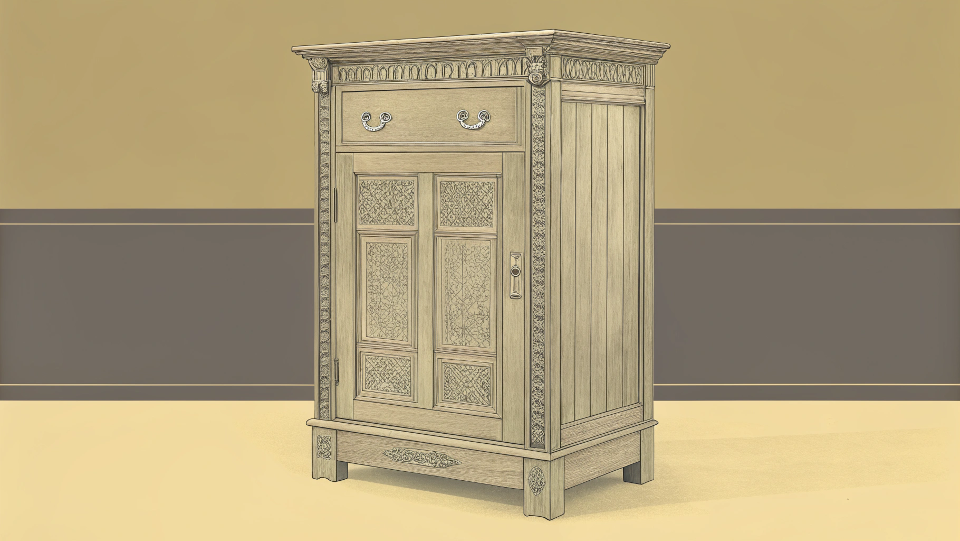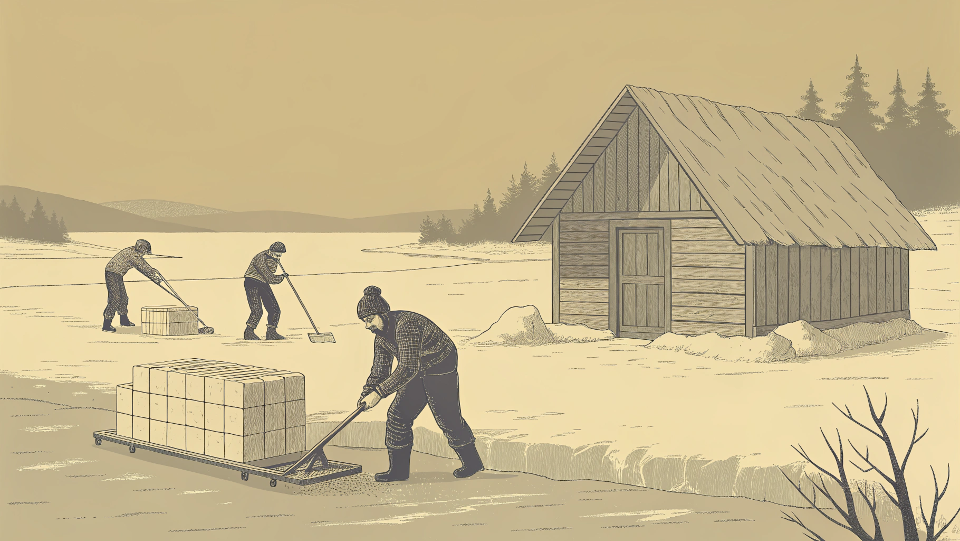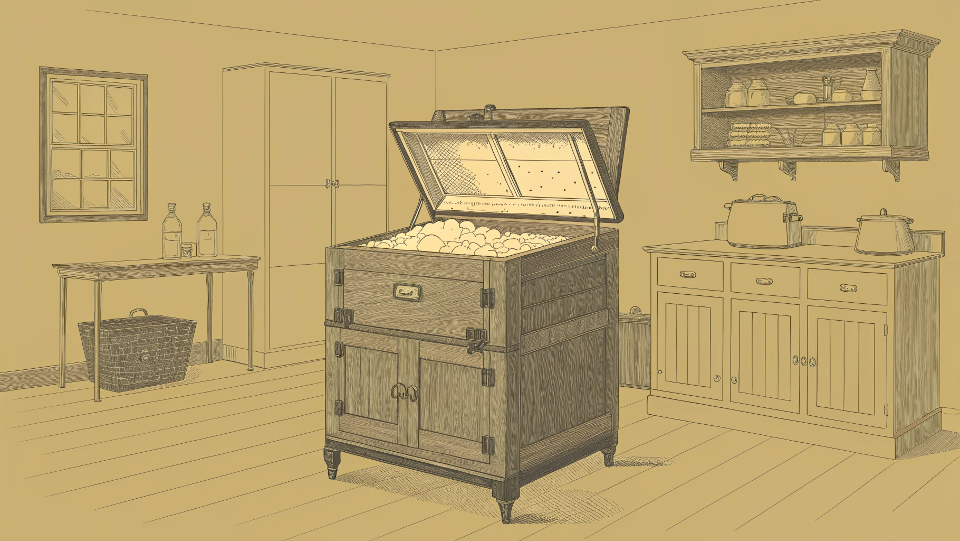You're fascinated by retro appliances, but how did they keep food cold before electricity? Their classic design holds a surprisingly simple and clever secret to keeping things cool.
An antique ice box works using a simple principle called convection. A large block of ice is placed in a top compartment. Cold air, which is denser, sinks and cools the food below. The warmer air from the food rises, gets cooled by the ice, and sinks again.
Understanding this basic function is just the beginning. It makes you wonder about the practical side of owning one back then. How efficient were they, and what are these beautiful pieces of history even worth today? Let's dig a little deeper into the world of pre-electric refrigeration.
How long does ice last in an antique ice box?
You love the retro look, but worry about practicality. You don't want a vintage cooler only to have your food spoil because the ice melted too fast in the summer heat.
How long ice lasts depends on the box's insulation, the outside temperature, and the ice block's size. A 25-pound block could last two to four days. A 50-pound block, in a well-made box and a cool room, could easily last a week or more.

From my years in the factory, I learned that insulation is everything. Early ice boxes used materials like charcoal, cork, or sawdust packed between the wood exterior and a metal interior lining. The quality of this insulation was the most important factor. Then there's the ice itself. A single, large block of ice melts much slower than the same weight in small cubes. This is because it has less surface area exposed to warmer air. I see this same principle today in modern high-end portable coolers for camping. People who use them know that one big block of ice is the secret. My insight for your customers who love the outdoors is that this old wisdom still applies to today's portable coolers and car refrigerators. Of course, just like a modern fridge, the more you open the door, the faster the ice will melt.
| Factor | Impact on Ice Longevity | My Professional Insight |
|---|---|---|
| Insulation Material | High (Cork) vs. Low (Sawdust) | The original craftsmanship really stands out here. I've seen some with such tight seals, they could rival modern coolers. It's all about stopping heat transfer. |
| Ice Block Size | Very high impact | This is pure physics. A large block was key to less frequent ice deliveries. For modern coolers, a single block always beats a bag of small cubes. |
| Room Temperature | High impact | I always tell people to keep modern fridges away from ovens. The same was true 100 years ago. A box in a cool cellar performed much better. |
| Frequency of Use | High impact | Every time you open the door, you let warm air in. People in the ice box era learned to be quick: open the door, grab what you need, and close it fast. |
Are antique ice boxes worth anything?
You find a dusty old ice box in your grandparents' basement. You see a piece of history, but you wonder if it's a valuable antique or just heavy, old junk to be thrown away.
Yes, they can be quite valuable. The price depends on the condition, brand, material, and originality of the hardware. A simple one needing repair might be under $100. A beautiful, restored oak model from a known maker can be worth over $1,000.

I've seen many old appliances in my time, and the value of an antique ice box comes down to a few key things. Think of it like buying any collectible.
Condition is Key
First, look at the overall shape it's in. Is the wood rotten or warped? Is the interior metal lining rusted through or is it clean? Missing original hardware like hinges or latches can lower the value. A piece that is complete and in good, solid condition is always worth more.
Material and Craftsmanship
The material makes a huge difference. An ice box made from solid oak with detailed carvings was a high-end piece of furniture in its day. It will be worth much more than a simpler pine box. I once saw a stunning oak ice box converted into a liquor cabinet at a trade show. For someone like you, who sells retro-style items, this idea of repurposing them is a great selling point for your target customers.
Brand Matters
Just like today, certain brands were known for quality. Look for a nameplate from makers like White Clad, Leonard, or Seeger. These well-known brands are more desirable to collectors and often command a higher price than no-name boxes.
How did old fashioned ice houses work?
Antique ice boxes needed a constant supply of ice to function. But where did all that ice come from in the middle of summer before we had modern industrial freezers?
The answer was the ice house. These were special, highly insulated buildings, often built partially underground. In winter, people harvested huge blocks of ice from frozen lakes. They packed the blocks tightly inside the ice house with sawdust or straw, which kept the ice frozen year-round.

The whole process was a massive operation. It shows how resourceful people were. In my business, we talk about the "cold chain" for food transport. Well, this was the original cold chain, and it was all done with manual labor and smart design.
First came the harvest. Men would go out onto frozen lakes and rivers in the dead of winter. They used long, specialized saws to cut the ice into massive, uniform blocks, sometimes weighing hundreds of pounds. Then they used large tongs to pull them from the water and transport them by horse-drawn sled to the ice house.
The ice house itself was a simple engineering marvel. It was often a windowless building with very thick, double walls. The space between the walls was filled with a foot or more of insulation like sawdust or straw. Sometimes they were built into the side of a hill to use the earth itself as a natural insulator. Inside, the ice blocks were packed tightly together with more sawdust between the layers. A floor drain let any meltwater escape so it wouldn't melt the rest of the ice. This system was so effective it could keep winter ice available all through the summer.
Conclusion
Antique ice boxes were simple but effective, using natural convection. Their value today is in their history and look, and they were powered by ice from cleverly designed ice houses.

